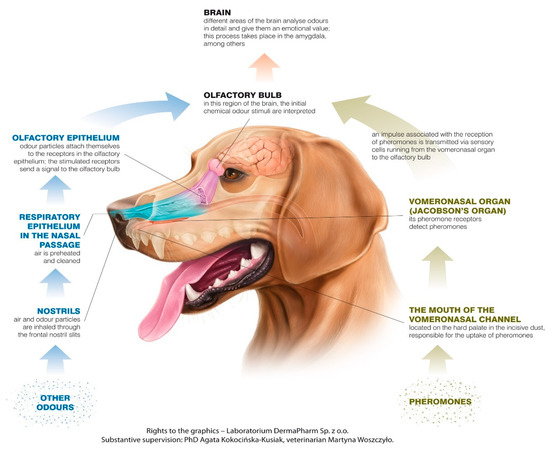Reference




Moonshot's Answer
Canines have stronger orthonasal smell capabilities due to several anatomical differences:
-
Larger Surface Area of Olfactory Epithelium: Dogs have a significantly larger surface area of olfactory epithelium compared to humans, which allows them to detect a greater number of odor molecules 1.
-
More Olfactory Receptors: Canines have around 125-300 million olfactory receptors, whereas humans possess only 5 million 5. This vast number of receptors enables dogs to recognize a wide array of scents.
-
Longer Nasal Cavity: Dogs' relatively long nasal cavity enhances their orthonasal smelling capabilities 4. This structure allows for a greater surface area for odor molecules to interact with the olfactory receptors.
-
Jacobsen's Organ: Unlike humans, dogs have an additional olfactory tool, Jacobsen's organ (or the vomeronasal organ), which increases their ability to smell 6. This organ is particularly sensitive to pheromones and plays a role in social communication and detection of certain chemicals.
-
Higher Concentration of Olfactory Receptor Neurons: Dogs have a higher concentration of olfactory receptor neurons, which are responsible for detecting and processing odor molecules 7.
These anatomical features collectively contribute to canines' superior orthonasal smell capabilities, allowing them to detect and discriminate a vast array of scents, which is crucial for their survival and behavior. Here is an image illustrating the olfactory system in dogs Image Source.
Follow Up
Related
What is the anatomical relationship between the corona radiata and the internal capsule?
What is the historical significance of the blood eagle sacrifice mentioned?
Why might a shorter nasopharynx be advantageous for long-distance running in humans?
What are the historical collection sites for Gluteus minimus in Iowa?